Anne Bourse
Different times, different PaulCrèvecœur, Paris
[Anne vit à Quatre-Chemins, Aubervilliers. On passe par un magasin de vêtements pour accéder à l’immeuble où elle est restée seule avec Acène, son unique voisin, depuis que les trois premiers étages se sont effondrés. Je n’imagine personne d’autre qu’elle ici. Il y a ses dessins aux murs, scotchés aux miroirs, sur un matelas coincé derrière la porte d’entrée, imprimés sur des tissus qui recouvrent les lampes de l’appartement. Elle m’en met plusieurs sur les genoux, fait du café, cherche son téléphone pour me montrer des photos. J’entends sa voix et comme souvent je pense qu’il faudrait la filmer.]
BP : Tu es contente ?
AB : Oui ! Ce n’est pas ce que je voulais, c’est tout à fait différent, mais enfin… j’espère que ça va. Je te montre des photox… des photos. Et je regarderai tes yeux. Je veux savoir si tu mens quand tu me dis ce que tu en penses.
BP : J’éviterai toujours de te parler de ce qui me met mal à l’aise…
AB : Oui, mais quand on essaie de cacher quelque chose, on préfère parfois le dire vite. On fait une diagonale.
BP : Alors oui, puisque tu en parles… justement… j’adore ces lits… ce dortoir… il est… mais parlons d’autre chose, il faut que tu fasses six matelas ?
AB : Quatre, non six oui… six. J’ai parlé des pièces comme si elles étaient déjà là et maintenant je dois les faire… Sarah m’aide heureusement, mais elle est nouvelle dans le business du tissu. J’en ai déjà trois, je te montre ? Tu connais Charlotte ?
BP : Bien sûr !
AB : Lady Chacha. Elle a acheté une jupe dans une friperie au Japon avec ce motif, celui qui est derrière toi, sur les tissus. C’est une jupe qu’elle met tout le temps, tu as déjà dû la voir avec. Je bloque totalement dessus. Elle m’a envoyé plusieurs photos, je les agrandis et je les dessine sur de la soie. Dans d’autres couleurs, avec de légères variations, mais on le retrouvera toujours. Comme une image mentale qui s’imprimera partout.
BP : Mais tu ne l’imprimes pas.
AB : Non je dessine tout. Et c’est l’enfer sur terre, parce que je déteste le labeur…
BP : Pourtant tu ne fais que des choses méticuleuses.
AB : Oui… ce n’est pas vraiment que ça m’isole, mais ça crée un espace. Et ça ne demande pas de cerveau. Il faut que les choses se fassent comme ça parfois…. plus ça devient compliqué… la répétition ça crée un état de dissociation…. et puis les pièces ont une durée, il faut la prendre en compte. Tu vois ces grands plexis que j’ai achetés ? Ils sont là depuis quatre mois. Je les ai trouvés en pensant à l’exposition, en imaginant recouvrir les murs de la galerie. Je les ai peints, j’y ai collé des dessins… mais tu sais, ce sont des pièces que tu ne peux pas faire semblant de faire. J’ai l’impression que si je garde ces plexis chez moi pendant deux ans ça sera ça, et ça sera beau, mais si je le fais pour le faire, ce sera seulement fait pour être fait. Tu comprends ce que je veux dire ? C’est pour ça que les placards me semblent plus intenses.
BP : Ah j’adore ce violet et le bleu dans le violet. Les lits seront peints eux aussi ?
AB : Oui. Tu sais, j’ai un délire presque physique de… d’abord avec les couleurs et ensuite un vrai délire total avec l’idée de peindre du métal. Je ne l’ai jamais fait et je sens que ça va être une révélation… enfin j’espère ! C’est un peu comme ces lits qui sont la transposition exacte d’un dessin dans une forme en métal. Peindre de l’acier, c’est un pur fantasme pour moi, quelque chose d’haptique. C’est du chaud sur du froid, un recouvrement. C’est mental et à la fois c’est juste très concret, enfin physique.
BP : Tu as déjà vu les films de Apichatpong Weerasethakul ? Oncle Boonmee ?
AB : Non, aucun.
BP : Il y a souvent des fantômes dedans – leurs corps sont transparents mais s’opacifient et deviennent progressivement indissociables de celui des vivants. Les rêves et la vie matérielle coïncident sans jamais que ça ne soit invraisemblable. Et puis il y a ces grandes moustiquaires au-dessus des lits, les lumières des néons, la chaleur, le bruit des moustiques… mais donc aucun dessin encadré ?
AB : Non. Un dessin c’est toujours quand même quelque chose qui se regarde. Et tu vois, les lits seront de vrais objets, pas des sculptures. Des présences qui ne sont pas des représentations. Alors s’il y avait un dessin, il faudrait qu’il appartienne à la fiction de l’espace. Je ne peux pas multiplier les manières de m’adresser à un corps dans l’espace. Il faut que ce soit dans une fiction, il faut que ça joue dans un film, pour éviter qu’on soit… il faut que ce soit un fantasme. Une ligne de dessins ce serait… non il faudrait des frigos… ou des placards. Regarde, j’ai fait une petite enveloppe pour mettre son courrier… [Elle me tend un carré de velours replié qu’elle a colorié avec un feutre rose] On met son briquet…
BP : Un paquet de Vogue pour que ça ne gonfle pas trop…
AB : Des tampons…
BP : Et une carte bleue… gold… black…
AB : Au moins une oui…
BP : Je vais te laisser travailler.
AB : Attends ! Je regarde juste, il y a un garçon que je trouve très mignon chez les Marlboro boys en bas… avec de gros sourcils… non… pas lui… il n’est pas là. Mais j’ai un titre. C’est « Different times, Different Paul ». P-a-u-l, pour Paul McCarthy. Tu vois à quoi il ressemble ? Il a ce truc des artistes californiens mal dégrossis, comme un Américain de soixante ans un peu punk quoi, mais très élégant, précis. J’adore la manière qu’il a de s’exprimer. Plein de fois, on lui demande : « Vous aviez dit à propos de Hollywood, vous aviez dit à propos de Disney, que c’était ça, et puis ça… » Mais jamais il n’essaie de se justifier, il répond juste : « Different times, different Paul. » C’est le genre de phrases, quand tu les lis ou que tu entends quelqu’un les dire, tu penses que tu en feras quelque chose un jour… mais c’est aussi des phrases qui font écho très vite, que tu peux te répéter et qui rendent les problèmes plus simples.
BP : Oui je vois. Il y a ce livre de Michaux, Henri Michaux, qui s’appelle « Poteaux d’angle »…je te l’apporterai… des aphorismes, un peu solennels c’est sûr mais… mais c’est une manière de dire les problèmes et leur solution en même temps qui est à la fois mentale et… enfin, une manière de renverser le cerveau plus apaisante que d’autres.
Extrait d’un entretien d’Anne Bourse par Baptiste Pinteaux.
[Anne lives in Quatre-Chemins, Aubervilliers. You go through a clothes store to get to her building, where she has lived alone with Acène, her only neighbour, since the first three floors collapsed. I couldn’t imagine anyone else living here except her. There are drawings on the walls, taped onto mirrors, on a mattress wedged behind the front door, and printed onto pieces of fabric covering the lamps in the apartment. She places a pile of them in my lap, makes coffee, and looks for her phone to show me some photos. I hear her voice and think, as I do often, that someone should film her.]
BP: You’re happy?
AB: Yes! It’s not what I wanted, it’s completely different, but like… I hope it works. Let me show you some photos. And I will watch your eyes. I want to know if you’re lying when you tell me what you think.
BP: I will always avoid talking to you about what makes me feel uncomfortable…
AB: Yes, but when someone wants to hide something, they prefer to say it quickly. They skim over it.
BP: Well yes, since you mention it… I am actually really into these beds… this dormitory… it’s… but let’s talk about something else, you have to make six mattresses?
AB: Four, no six yes… six. I have been talking about these works as if they already existed and now I have to actually make them… luckily Sarah is helping me, but she is new to the business of fabric. I have already made three, do you want to see them? Do you know Charlotte?
BP: Of course!
AB: Lady Chacha. She bought a second-hand skirt in Japan with this pattern on it, the one behind you, on the fabric. She wears this skirt all the time, you must have seen her with it. I am completely obsessed. She sent me lots of photos of it, I blow them up, and draw them onto silk. The colours are different, and it varies slightly, but you can still recognise it. It’s like a mental image that will cover everything.
BP: But you never print it?
AB: No, I draw everything. It’s hell on Earth, because I hate labour…
BP: But everything you do is meticulous
AB: Yes… I wouldn’t say it isolates me, but it creates a space. And it’s brainless. Sometimes you need to do things like that… then it becomes more complicated… repetition can put you in a state of dissociation… and the longer it takes to make a work, the more you have to take that into consideration. See those big perspex that I bought? I got them with the show in mind, thinking that I might cover the walls of the gallery with them. I painted them, stuck drawings in them… but you know, this kind of work can quickly seem affected. I think that if I keep them at my place for another two years, that’ll be that, and that will be beautiful, but if I make them just for the sake of making them, they will only ever be… made for the sake of being made. You get what I mean? That’s why the cupboards seem more intense to me.
BP: I love this purple and the blue with the purple. The beds will be painted as well?
AB: Yes. You know, I have an almost physical obsession with… well firstly with colour and then a complete obsession with the idea of painting metal. I have never done it before and I feel like it’s going to be a revelation…. I mean I hope! It’s a bit like those beds, which are the exact translation of a drawing into metal. Painting steel is pure fantasy for me, something haptic. Hot on cold, a covering. It’s mental but also just very concrete, I mean like physical.
BP: Have you ever seen anything by Apichatpong Weerasethakul? Uncle Boonmee?
AB: No, nothing.
BP: There are often ghosts in his films – their bodies are transparent but become more and more opaque, becoming in the end indistinguishable from living bodies. Dreams and the material world coincide without it ever really seeming unrealistic. And then there are the large mosquito nets above the beds, the neon lights, the heat, the buzzing of mosquitoes… but so none of the drawings will be framed?
AB: No. A drawing is always just something that you look at. And you know, the beds will be real objects, not sculptures. Presences, not representations. So, if there are going to be drawings, they have to be a part of the fiction of the space. I can’t multiply the ways in which a body encounters the space. It has to be through fiction, as though it exists in a film, to make sure you’re not… it has to be like a fantasy. A line of drawings would be… no, there must be fridges… or cupboards. Look, I made a little envelope to put your letters into… [She hands me a square of folded velvet that she has coloured in with a pink marker]. You can put your lighter in it…
BP: A packet of Vogues so there’s still enough room
AB: Some tampons
BP: And your carte bleue… gold… black
AB: At least one of the them…
BP: I’ll let you get back to work…
AB: Wait! I am just looking… there is a boy who I find very cute, who hangs with the Malboro boys below… with thick eyebrows… no… not him… he’s not there. But I have a title. ‘Different times, Different Paul’. P-a- u-l, for Paul McCarthy. You know what he looks like? He has that kind of rough around the edges Californian artist vibe, like a kind of punk American in his sixties, while still very elegant, specific. I love the way he expresses himself. He is asked all the time, ‘You’ve said this about Hollywood, you’ve said this about Disneyland, whatever this, whatever that…’ But he never tries to justify himself, he just replies: ‘Different times, Different Paul’. It’s the kind of sentence that when you read or hear someone say it, you think you’ll do something with it one day… as well as being the kind of sentence that gets stuck in your head, that you say over and over to yourself, that makes problems more simple.
BP: Right. There’s that book by Michaux, Henri Michaux, called Tent Posts… I’ll bring it over next time… aphorisms. They might seem a little solemn, but they have a way of stating the problem and the solution at the same time, that is both mental and… well, a way of turning the brain over that’s more soothing than others.
Excerpt from an interview with Anne Bourse by Baptiste Pinteaux.
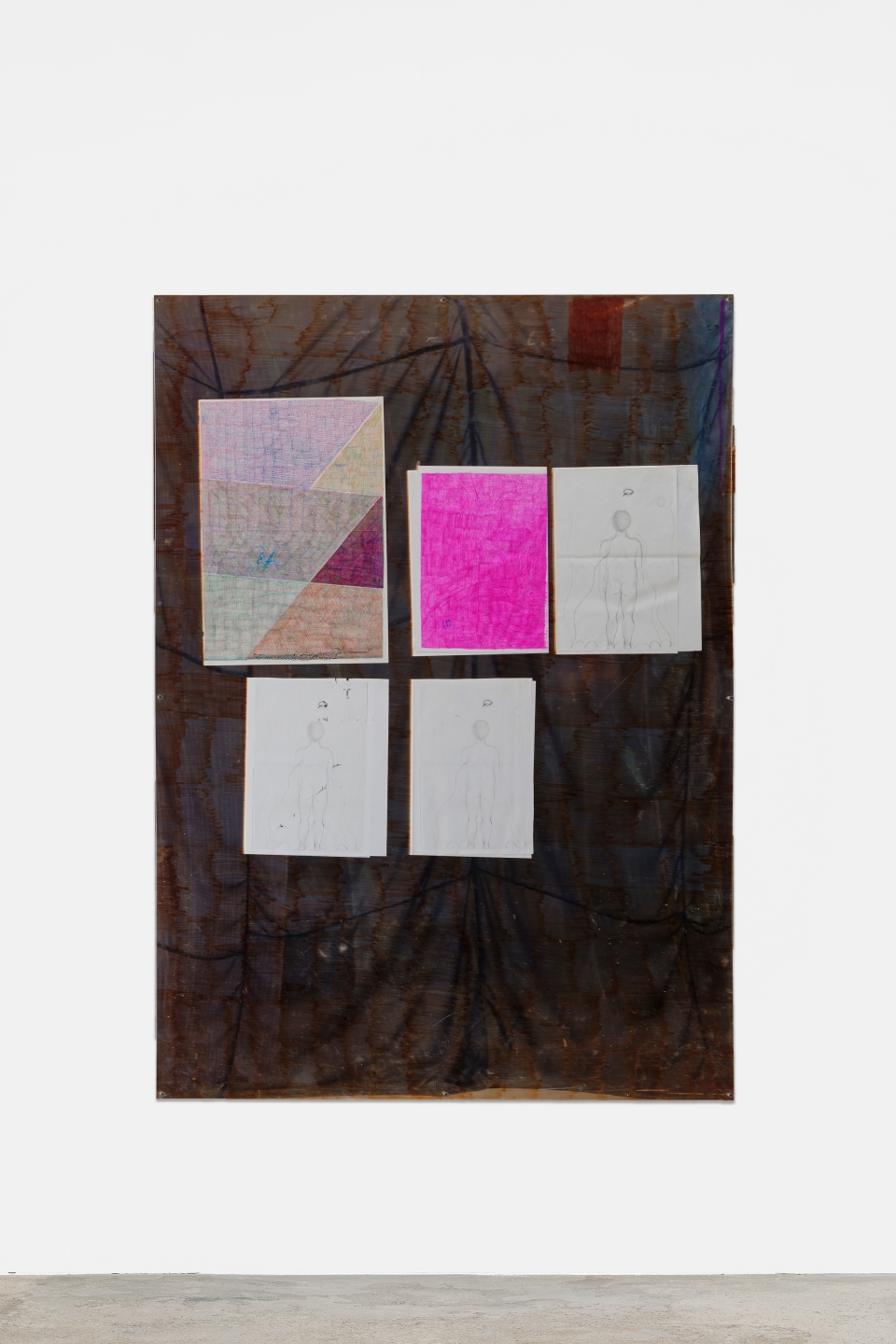
Talking about shapely ass super heroes on the front face, we drew different styles of dick on the back, 2021
Pencil, pen and print on coated paper, alcohol marker, plexiglass mirror, plexiglass
140 × 100 cm
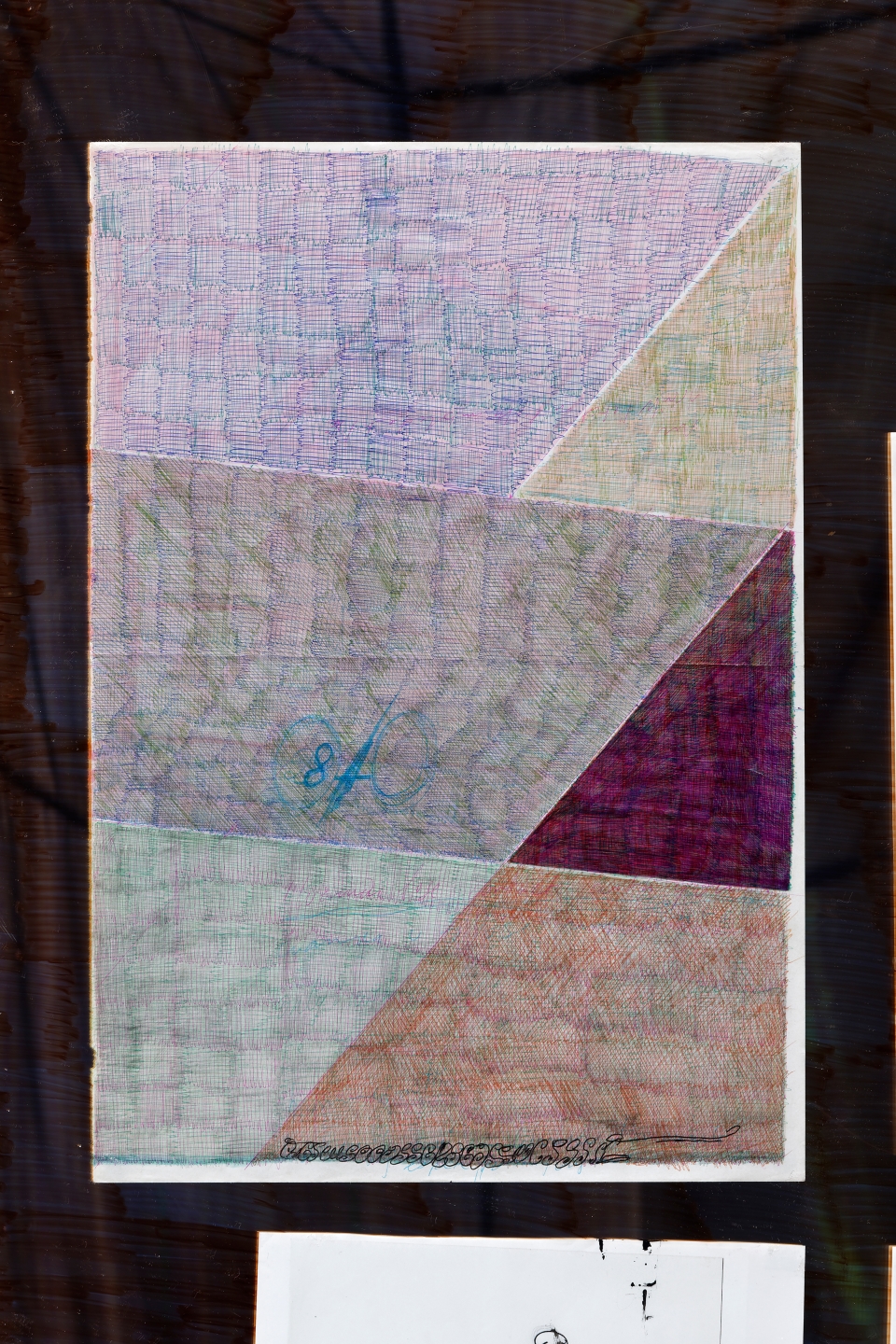
Talking about shapely ass super heroes on the front face, we drew different styles of dick on the back, 2021
Detail
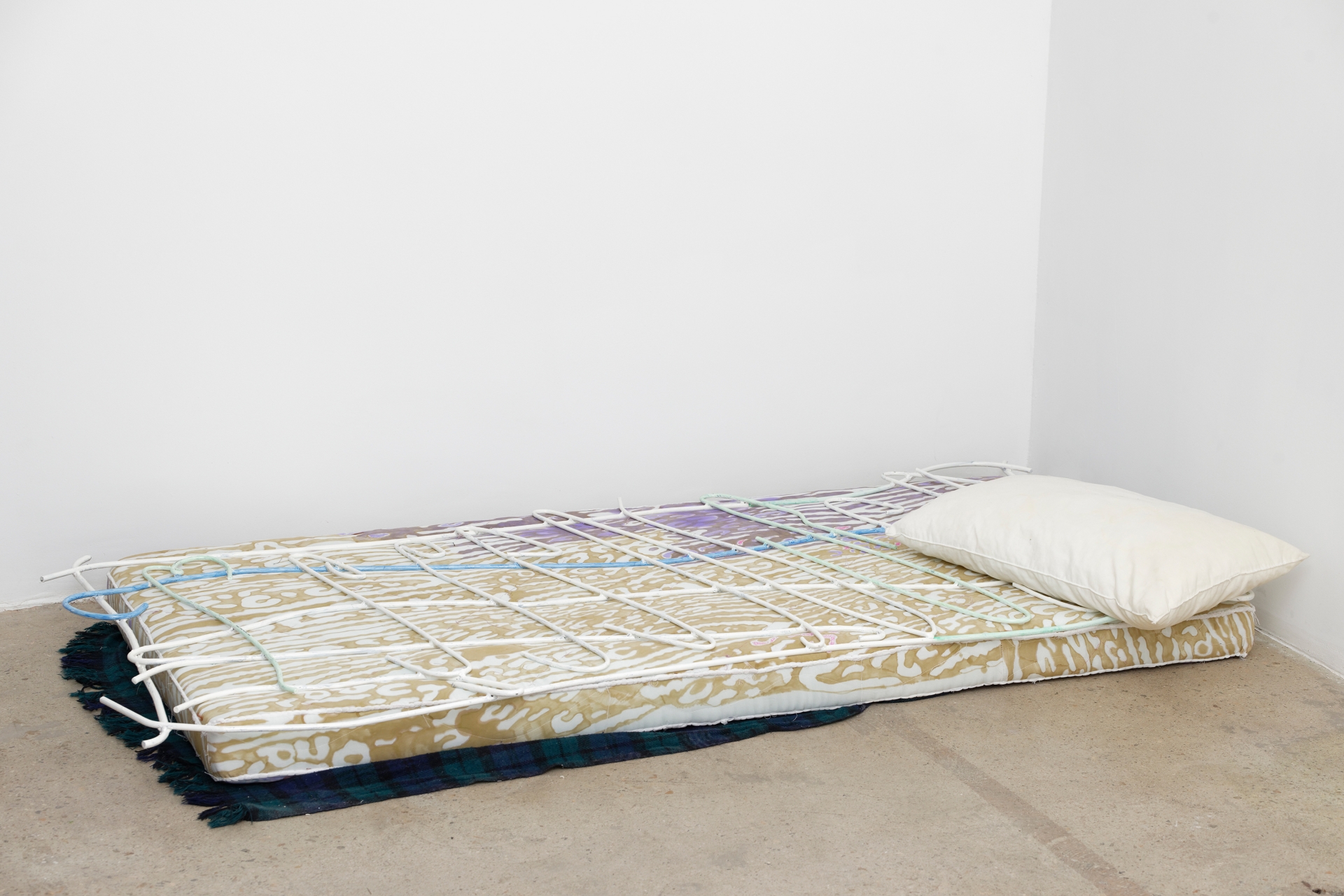
No shadows in the way, 2021
Steel, glycero paint, alcohol marker, ink and pencil on silk, cotton wool, foam, found pillow
200 × 100 × 12 cm
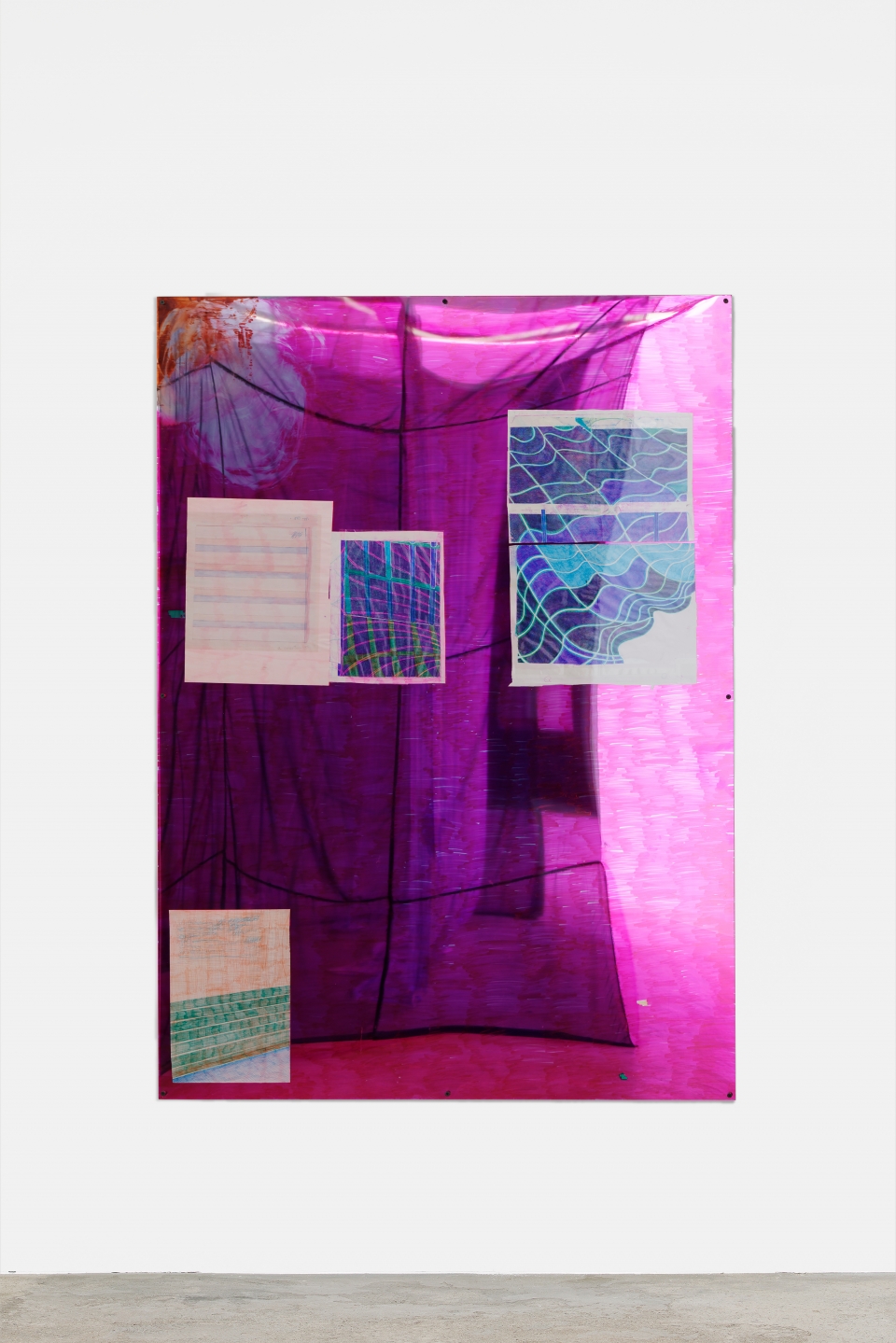
Just before the lock down lock once again, 2021
Pen, felt pen and print on coated paper, alcohol felt pen, plexiglass mirror, plexiglass
140 × 100 cm
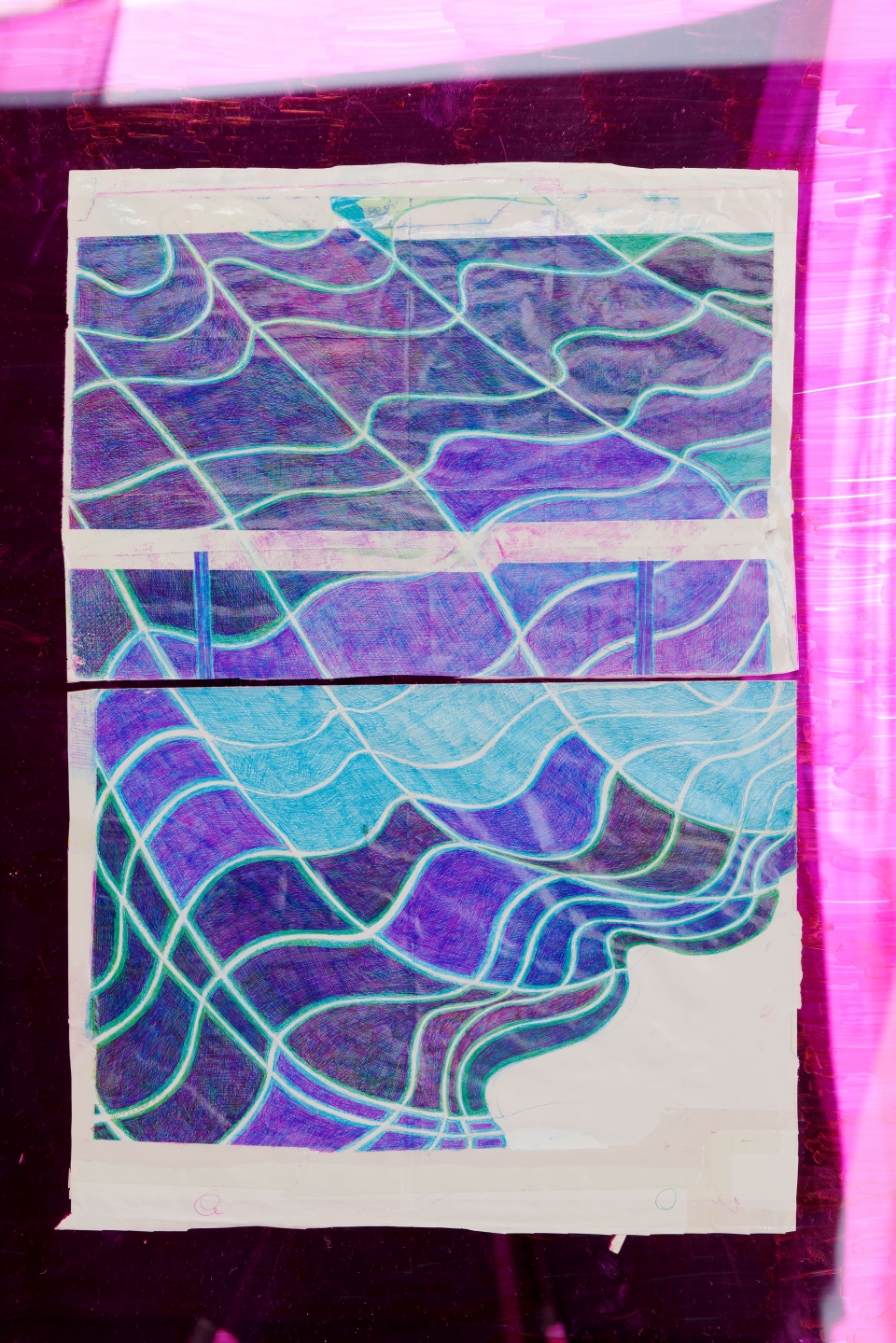
Just before the lock down lock once again, 2021
Detail

Suddenly realizing that he doesn’t really care if she loves him or loves him not, 2021
Pencil, felt pen, print and ink on coated paper, self-adhesive stickers, alcohol felt pen, plexiglass mirror, plexiglass
140 × 100 cm
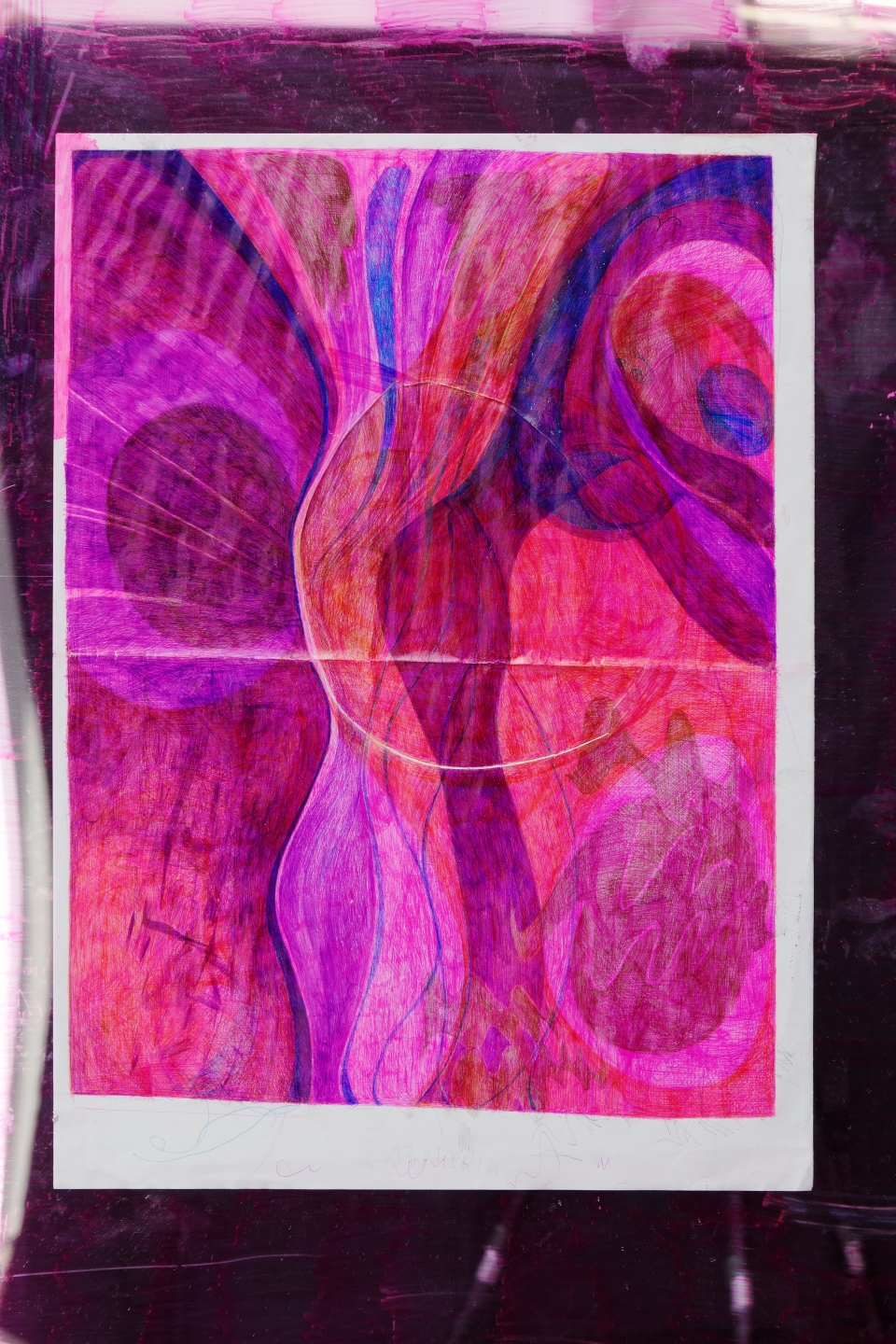
Suddenly realizing that he doesn’t really care if she loves him or loves him not, 2021
Detail
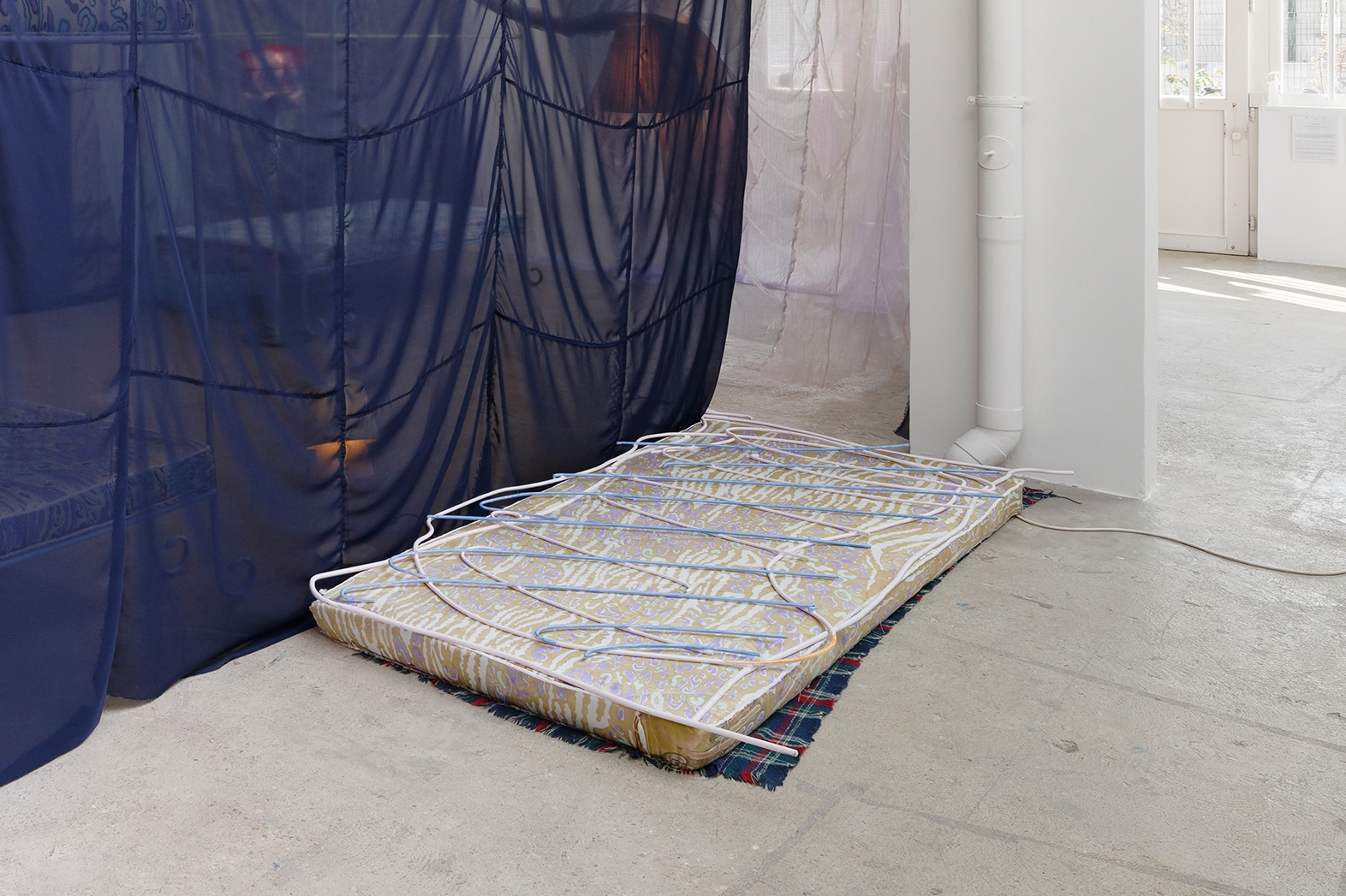
No shadows in the way of me, 2021
Steel, glycerine paint, alcohol marker, ink and pencil on silk, cotton wool, foam
200 × 100 × 12 cm

Lever de soleil, coucher de soleil, où je suis en ce moment (1), 2021
Ink and pencil on silk, cotton wool, foam, steel, glycero paint, alcohol marker
192 × 92 × 180 cm

Lever de soleil, coucher de soleil, où je suis en ce moment (2), 2021
Ink and pencil on silk, cotton wool, foam, steel, glycero paint, alcohol marker
192 × 92 × 180 cm
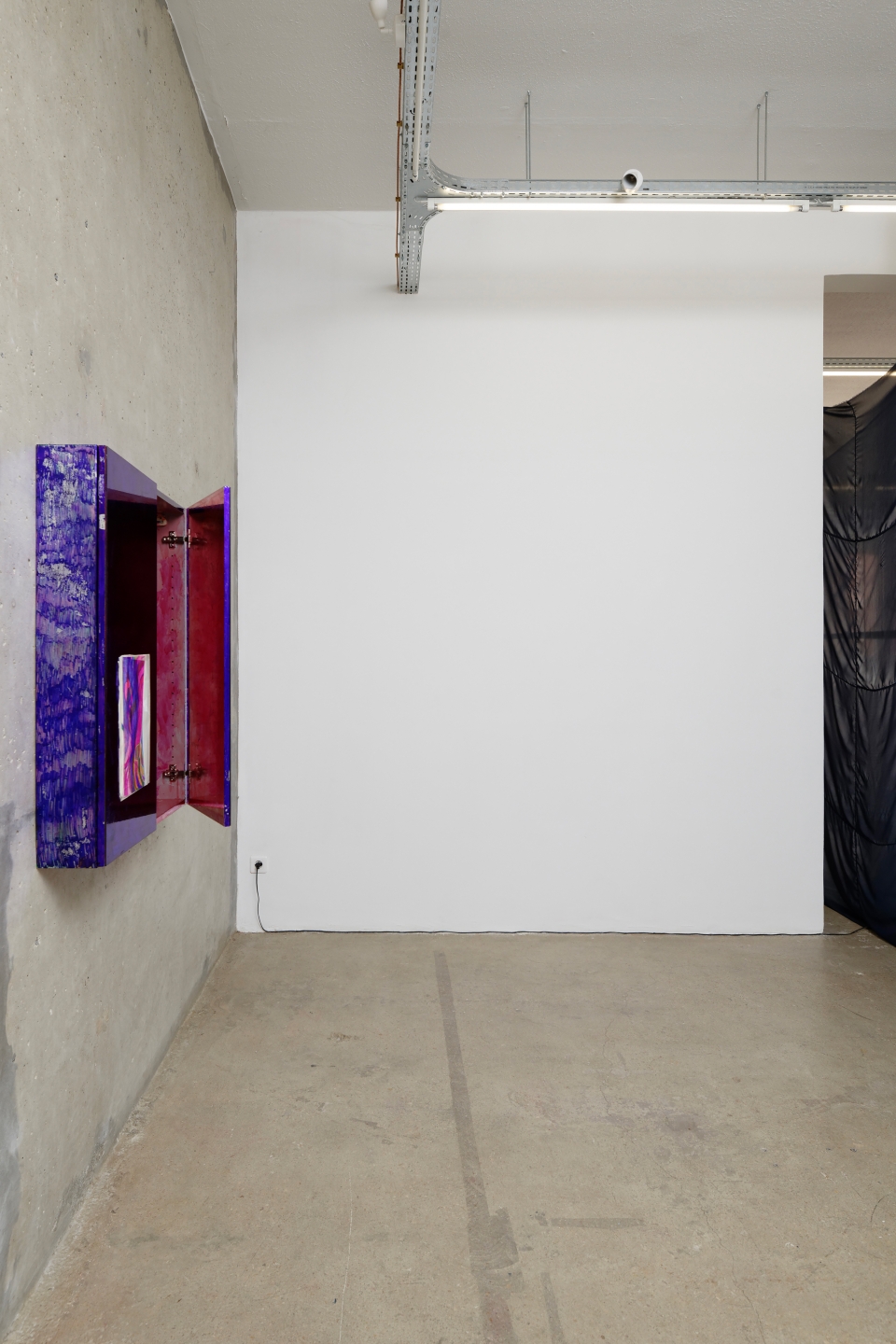
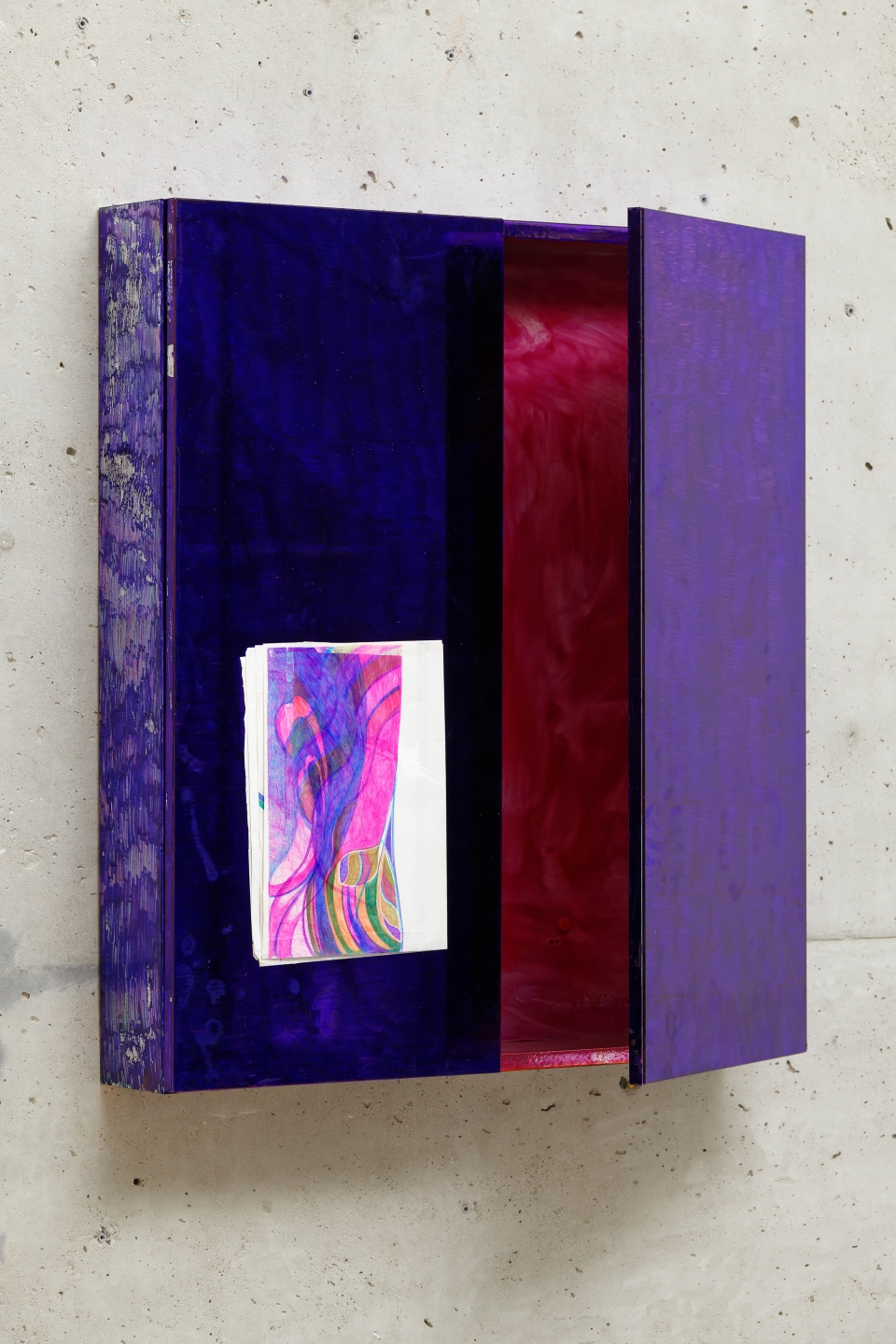
Ce soir les voitures roulent à l’envers, 2021
Pen on paper, stained glass paint, alcohol marker, bathroom cabinet
90 × 80 × 13 cm
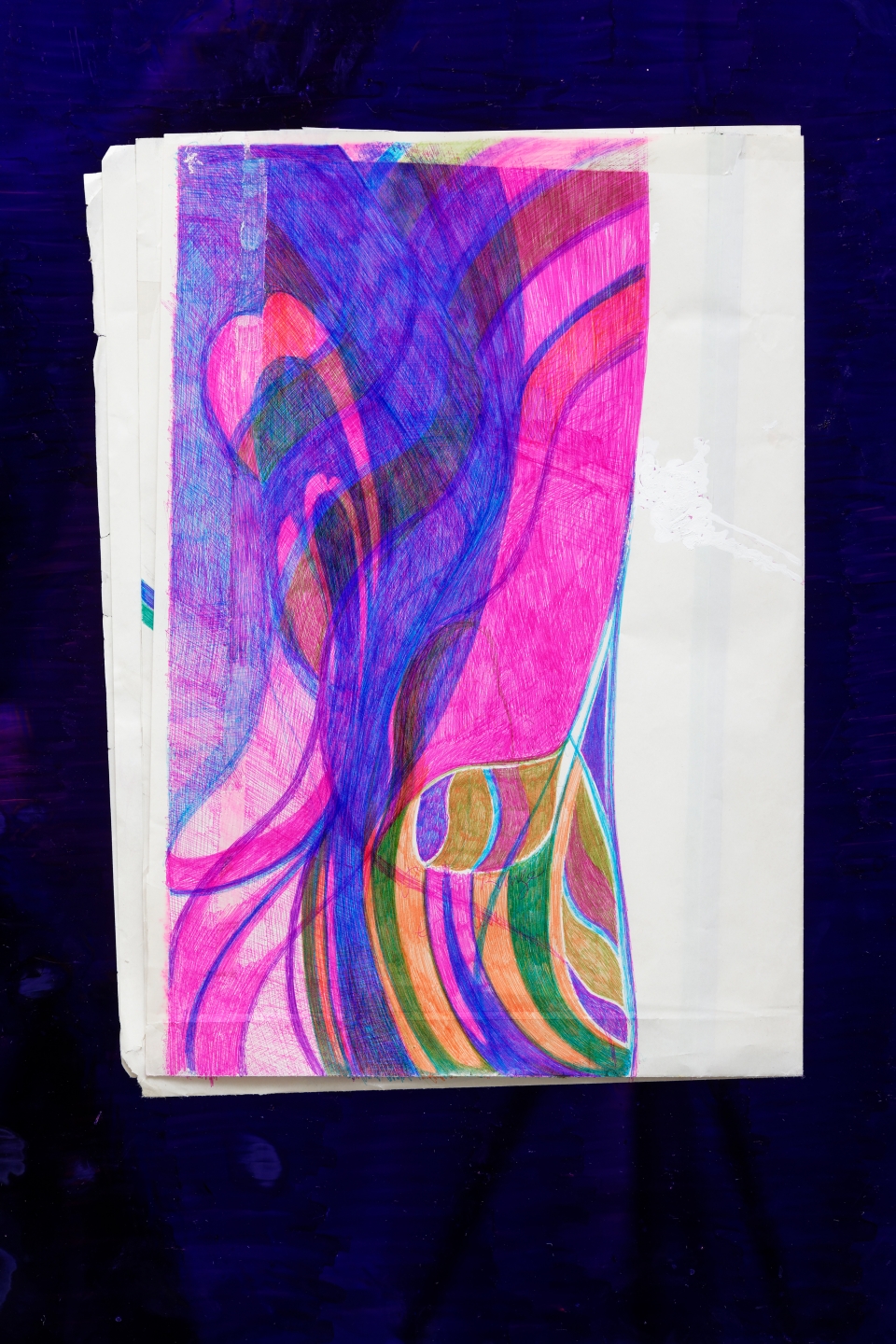
All pictures: © Aurélien Mole

PARIS — Cascades
9 rue des Cascades
75 020 Paris – France
from Tue. to Fri.: 10 a.m. to 6 p.m.
Sat.: 11 a.m. to 7 p.m.
and by appointment
PARIS — Beaune
5 & 7 rue de Beaune
75 007 Paris – France
from Tue. to Fri.: 10 a.m. to 6 p.m.
Sat.: 11 a.m. to 7 p.m.
and by appointment
Contact
PARIS — CASCADES: +33 (0)9 54 57 31 26
PARIS — BEAUNE: +33 (0)9 62 64 38 84
info@galeriecrevecoeur.com











